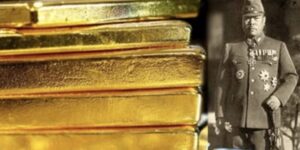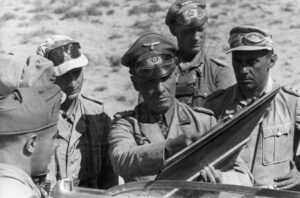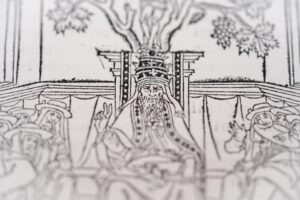Straight out of a National Treasure movie, the Beale Ciphers have promised hundreds of pounds of gold, silver, and jewels to the one who can crack the code. But is the treasure even real?
Background
The ciphers first appeared in a modest pamphlet in 1885. It told of a man named Thomas J. Beale who buried this extraordinary treasure in Bedford County, Virginia in the 1820s. He obtained these riches, it said, from a mine in Sante Fe, New Mexico. Paranoid about losing it, he created a series of difficult ciphers to hide its location. Then he locked the pamphlet away in an iron box, along with some letters and other documents.
He gave the box to an innkeeper named Robert Morriss. He told Morriss not to open the box until he returned sometime in the next 10 years. Beale never came back. Nor did he give Morriss the key to solving the ciphers.
The Beale ciphers supposedly comprise three parts: the treasure’s location, its precise contents, and the person or persons to whom Beale wanted to bequeath the treasure.

The lone Beale cipher that has been solved.
Morriss eventually opened the box in 1845. After failed attempts at solving the peculiar puzzle, Morriss gave them to a friend (identity unknown…conveniently), who ended up cracking one cipher. He used the Declaration of Independence as the key. He figured out that “71” corresponded to the 71st word in the Declaration of Independence; “965” was the 965th word, etc. This is followed by taking the first letter of that word.
Deciphered, that part of the puzzle read:
I have deposited in the county of Bedford, about four miles from Buford’s, in an excavation or vault, six feet below the surface of the ground…the first deposit consisted of ten hundred and fourteen pounds of gold, and thirteen-eight hundred and twelve pounds of silver…the second…consisted of nineteen hundred and seven pounds of gold and twelve hundred and twenty eight of silver; also jewels… value at thirteen thousand dollars.
Different rules seem to apply to the two other ciphers. This key does not work.
The treasure, which is worth over 54 million dollars today, supposedly sits in iron pots in a stone vault somewhere. Alas, the two remaining texts remain unsolved.

Beale cipher no. 1. Photo: Thomas J. Beale
Cracking the code
Many have tried to discover its contents using well-known historical texts. Apart from the Declaration of Independence, others have tried the U.S. Constitution, the Bible, the Magna Carta, and other iconic documents. The anonymous friend of Robert Morriss made the cipher available to the public in the hope that someone could break the code.
No one has succeeded. Even cryptographers have hit a brick wall with the other two. Some have even suggested that the numbers seem more random than anything. Nothing they’ve done has led to any words or phrases that make sense.
Furthermore, some of the supporting letters that were in Beale’s locked box, along with the pamphlet, contain discrepancies. Some words in the letters originated in the 1830s instead of the 1820s, (such as “stampeding” or “Improvise”), suggesting that the mystery itself might be a hoax.

Beale cipher no.3. Photo: Thomas J. Beale
Who was Thomas Beale?
Enthusiasts have scoured census records from the 1800s to figure out who the purported author was. One Thomas Beale lived in New Hampshire and another in Connecticut in 1810 and 1820. A Thomas Beall lived in St Louis, the location from which Beale sent letters, as stated in the pamphlet.
Some mystery hounds even insinuated that writer Edgar Allan Poe was the real author because of his love of mysteries, codes, and ciphers. However, they didn’t do their homework properly, because the timing did not match. Poe died before the Beale Papers came out.
Another candidate is Thomas Jefferson since he played a major role in the Declaration of Independence. Thomas Beale might have been a pseudonym. However, the shared first name could simply be a coincidence.
There are no other clues as to who Thomas Beale could have been.
Crazed attempts
It seems that the prospect of the treasure sent a few individuals off the rails. People from all walks of life — contractors, electricians, psychics — tried to find it. Some bankrupted themselves. Others broke laws including trespassing, using explosives illegally, and unauthorized digging in cemeteries.
According to one source, a man named Stan Czanowski spent over $70,000 to dig up sections of land using explosives and heavy machinery. A high-ranking editor lost his job because of his obsession. Another claimed that he received the location in a dream. More than one tried to use psychic powers to pinpoint the location.
In a 1984 article from The Washington Post titled “Legendary Treasure Quests,” author Hank Burchard mentions a woman named Marilyn Parsons who spent two months in Bedford County jail for desecrating a cemetery. Convinced that gravestones were parts of the code, she dug up parts of the cemetery with a backhoe.
In modern times, the Beale Cipher Association was set up to help with the search. Every year, members who pay a $25 annual fee get to attend regular workshops, talks, and seminars about the cipher’s details. However, nothing came to fruition.
Various online groups have tried to solve the ciphers. The r/cryptography subreddit has taken a couple of unsuccessful cracks at it. Some very old Facebook groups and outdated websites are the last remnants of the search. It seems that the wider public has lost hope of ever solving them.
Conclusion
Could it be a hoax? Some contemporary skeptics suggest that this was simply a ploy to sell pamphlets of the Beale numbers, which cost 50 cents at the time.
It is also worth noting that the solved cipher was from a modified version of the Declaration of Independence. (There were several variations of the Declaration floating around at that time.) Why not the original version? Even though the result from the modified version looks promising, it could be a case of someone seeing what they want to see.
If someone could uncover the true identity of Thomas Beale, it might yield clues about the key to the other ciphers.






